I've always thrived on learning off the cuff, being thrown to the wolves, sink or swim.
Back in the mid-90's I interviewed for a magnet crane operator job at a steel plant. I was clueless.
The head supervisor asked me, "Hey, you got any experience working with 5 ton plates of steel?".
"Not at all." I admitted. "Give me a chance though and I'll figure it out."
"Yeah, we'll see. The guy we fired ran some steel into what used to be the bathroom over there." he added, pointing from his office window to a caved-in half wall with an exposed sink, toilet and a row of lockers.
More Like This
Dave was the other crane operator and gave me a crash course on the control pad saying, "If you ever drop a plate ring this bell at the bottom. Otherwise they call the coroner." He showed me what not to do by spinning a plate until the power line on the magnet separated at the plug and all I could see was a blue lightsaber holding the two lines together. "See that?" Dave exclaimed. "That's controlled lightning."
Fast forward a couple days later and I was loading up semis with steel, stacking plates within a quarter inch side tolerance so drivers could stay on the road without being ticketed. I loved that job but I'd be lying if I didn't think every day in there could've been my last.
Spontaneity. It's a good way to shake things up now and then.
And fishing is no different. Each fish I've chased, each fly they've eaten, every new body of water, produces a set of challenges — new ways to engage what lies beneath the surface.
So when the more refined half of our family (wife and daughter) got sick and backed out of a planned vacation to New Orleans, I saw it as another chance to take a shot in the dark. Armed with some heavy rods, home-cooked crab flies, and a 16 foot panga skiff; my 13-year-old son and I gave it a go. Caution to the wind, we got to road tripping — Michigan to Louisiana, in search of redfish, black drum or whatever we could find.

Now, whenever you ask someone's opinion about a DIY (do-it-yourself) project you'll find some naysayers. And in my experience you should never negate their advice, qualified or not. Sometimes random thoughts or an odd warning can make you reassess your game plan. And if those naysayers happen to be qualified — take their words as gospel.
So, before scooting around the Louisiana marsh, I asked around about the logistics of it all and two things kept coming up.
One, it's huge. You could probably squeeze Delaware and Rhode Island into the Mississippi Delta. So finding productive water somewhere in the roughly 4000 square miles and bypassing the rest can be like finding a size 20 dry fly hook, in a haystack, on an island ... in the marsh.
Two, the Mississippi Delta is a literal minefield riddled with crab traps attached to pull lines, sunken boats — sunken anything really — logs, trees, trees topped with logs, roofs, powerlines and whatever other remnants Hurricane Ida left ravaged in the Gulf a few months prior. In short, I knew one wrong move on my part could mean a rescue call from Seatow or worse, much worse.

I had to play it safe. And to do that I needed to chop it up a little with those in the know. Enter Tony.
Tony's and his family ran a shrimp business for generations that closed a few years back. He knew the water. He also happened to own the cabin we stayed in. So as Tony and I got to talking about the bays and bayous he gave me some life-saving advice: follow the crab lines. Now delving into how one follows those crab lines, when, and during what tides etc. would turn this into an expository essay. With some things you just have to wing it. But I don't recommend anyone going down there blind. In fact, no BS, hiring a professional guide instead could be the difference between a great trip and hovering between life and death.
Needless to say, we took it slow. So slow at times it kinda felt like we were going in reverse.
But we had time.
The first day was all rain. So we just idled around, looking for safe routes and scanning depth charts. The second day was windy and the water turned turbid. Not helpful when everything subsurface is a hull hazard and where depth can go from 5 ft to a foot in a second. One wrong move and your lower unit is laying on the bottom of the bay.
The third day didn't offer much relief but we pressed on, finally getting our first look at a tailing red. It was a long shot and the boat got stuck in the mud. Out of my son's range, I jumped out of the boat into thigh-high deep mud, climbing onto a small island to cast. Of course, once I got in casting range, the fish disappeared.
Aside from Tony and his ninja navigation advice, a local crabber showed us the ropes (literally) and let us help sort crab back at the dock. He gave us more great intel. Nothing much in the way of catching fish and more about how not to catch a prop in a trap. And finally, a fellow angler from Michigan gave us a few tips and a couple areas to focus our attention. That last bit of info combined with everything else proved to be the game changer.

Day four had us motoring 30 minutes from the launch to fish clear water protected from all the previous days wind and rain. Instead of looking for tails we were seeing fish, head down, 4 to 5 feet deep in the water column. It wasn't the 10 to 15 feet of vis we sometimes get up in the Great Lakes of Michigan but it was what I like to call a G.E.D.: good enough dammit!
Redfish, black drum and sheepshead all came to the party, with only the latter not making it in the net. My advice on these fish? Leave your 8 weight at home. Tie your own leaders in 6-7 foot 40-30-20lb increments. These were big fish, 10 to 30 pounds plus. Fish that'll cork a 10 weight no problem. And even with that leverage, expect a 30 lb fish to punch in for 10 minutes on the clock at least.

That was the fun part. Now back to reality.
DIY can easily turn DIE.
The risk/reward can be an adrenaline rush, inspiring, and satisfying all in one, but the die element of DIY trip like this is always lurking.
Coming down to the Louisiana marsh expecting to get it done without an expert guide is, at best, wishful thinking. Even for an experienced captain somewhere else, it's insane. We had to research, track, then backtrack for a few days just to make pathways to proving grounds. We met some great folks along the way that either out of kindness or sheer pity offered sound advice. Without that and more than a little good luck, an angler's first DIY trip to the Delta could really be his last. Lose a lower unit, crack a hull, get beached on low tide and you're done. That's not embellishment — it's reality.
In fishing, sometimes you're lucky, sometimes you're good. And this time, man, were we lucky.





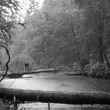









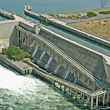



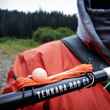




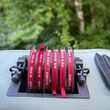





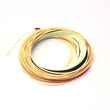
Comments